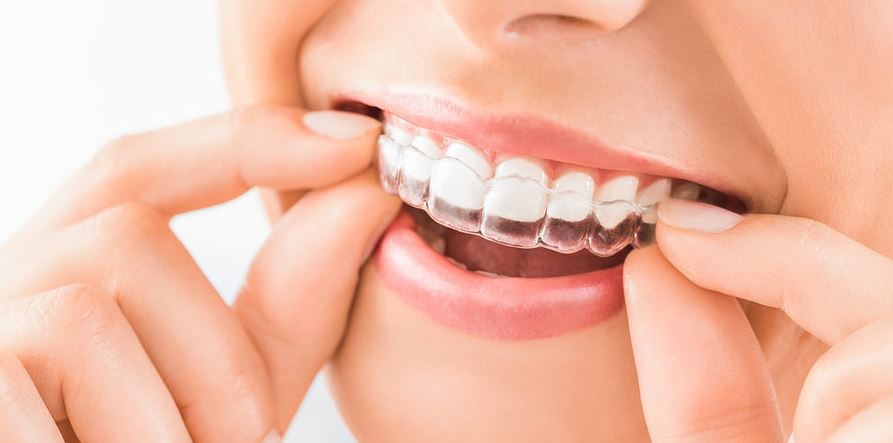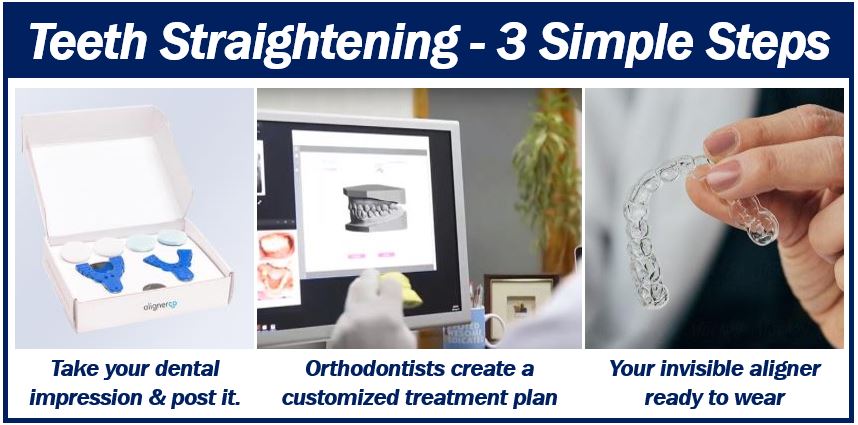
If you are looking for a good alternative to traditional braces, invisible aligners or invisible braces are the best items available today. Apart from being relatively comfortable, invisible aligners are much less noticeable than traditional braces.
Teeth aligners have been around since 1999. Since they were first launched, they have changed significantly thanks to advancements in technology in the world of dentistry.
Invisible aligners consist of a series of tight-fitting tailor-made mouthpieces that slip over the patient’s teeth.
Metal Braces vs Invisible Aligners
Traditional braces are made of metal wire with invisible brackets. Invisible aligners, on the other hand, consist of clear, colorless, transparent material. Both braces and aligners have one purpose – teeth straightening. Whichever one you choose, your will be pleased with the end result – straight teeth, a nicer smile, and a better bite.
The difference lies in the way they work, how they are to be worn, the cost of braces, as well as their structure. In ninety percent of orthodontic cases, invisible aligners are the best option. People with very badly misaligned teeth make up the other ten percent. For them, metal braces are the best option.
Cost Difference – Metal Braces vs Invisible Aligners
If we compare the prices of metal braces and invisible aligners, metal braces are considerably more expensive.
Traditional metal braces cost on average $4,000 and $5,000. Invisible aligners, on the other hand, never cost more than about $2,000, including the impression kit.
You can get aligners from an at-home teeth-straightening company like AlignerCo for as little as $1,395. There is also a provision for paying in affordable installments for people who are running on a tight budget.
Many dental services today can send an impression kit directly to your home. You take your dental impression yourself and send it back to them. They can then create a customized treatment plan.

Patient can remove Invisible Aligners at will
Metal supports, once the dentist has placed them in your mouth, remain there until the treatment is completed. The great thing about invisible aligners is that wearers can take them off and put them back on whenever they like.
There are many times when wearing braces is annoying, uncomfortable, a nuisance, and even painful. Patients can remove their invisible aligner to brush their teeth and floss. They can also take them out before meals or having something to drink.
However, even though being able to take them out is great, don’t do it too often. The longer they are out the longer it will take to complete your treatment. Therefore, you should only remove them when absolutely necessary. They should remain in your mouth for at least 20-to-22 hours each day.
Many self-conscious people are reluctant to wear metal braces. Apart from the discomfort that some patients experience, they also attract unwelcome attention every time wearers smile, eat, or open their mouths.
Who can use Invisible Aligners and Metal Braces?
Hundreds of millions of children and teenagers worldwide have to wear traditional braces. For many of them, wearing them is embarrassing. In fact, this is the case for many adults too. However, since invisible aligners are inconspicuous, work just as well, and can be removed at will, a growing number of people are opting for them.
You may be talking to somebody who is wearing invisible aligners and not even be aware of it. For individuals who work with the public, such as public speakers, TV announcers and personalities, and salespeople, invisible aligners are a godsend.
Invisible aligners are best for adults and teenagers. Dentists might not recommend treatment for young children because their mouths are still developing and growing. The aligners are custom-made for a tight fit, which means that they would soon become too tight for young children.
What is the procedure?
As soon as the orthodontist has determined how to correct the patient’s bite, they will create a plan for adjusting or moving their teeth. Patients will be fitted for several different aligners. Over time, as the patient’s teeth move, the dentist will replace the aligners.
In most cases, the patient will be given a new aligner every few weeks so that the teeth continue moving toward their straightened position.
Invisible Aligners – how long is the treatment?
Treatment duration depends on the position of a patient’s teeth, i.e., how much they need to be rotated and moved. The more crooked your teeth, the longer the whole thing will take.
Most treatments last from one to two years. If an adult wore braces as a child, they may only have to wear aligners for a few weeks.
Some patients who underwent treatment with invisible aligners may have to finish off the whole procedure with metal braces for a couple of months. Dentists usually refer to this last part as a ‘refinement.’
Patients need to visit their dentist every six to eight weeks to monitor their progress. During those visits, they will also be given new aligners.
After completing your treatment, you will need to wear retainers. Studies have shown that without retainers, a patient’s teeth can gradually move back.
Reasons for straightening your teeth
Most of us think that the only reason somebody may want treatment for crooked teeth is to have a nice smile. However, there are also health reasons.
If your teeth are crooked, you cannot bite things as well or effectively as you could with straight teeth.
Straightening your teeth can also help keep them healthy over the long-term, dentists say.
Do they work?
Invisible aligners work as well as metal braces. In other words, they are effective in improving your bite and straightening your teeth. However, you must do what the dentist tells you. If you do not follow his or her instructions properly, your treatment might suffer.

